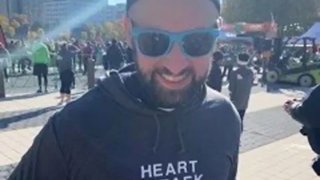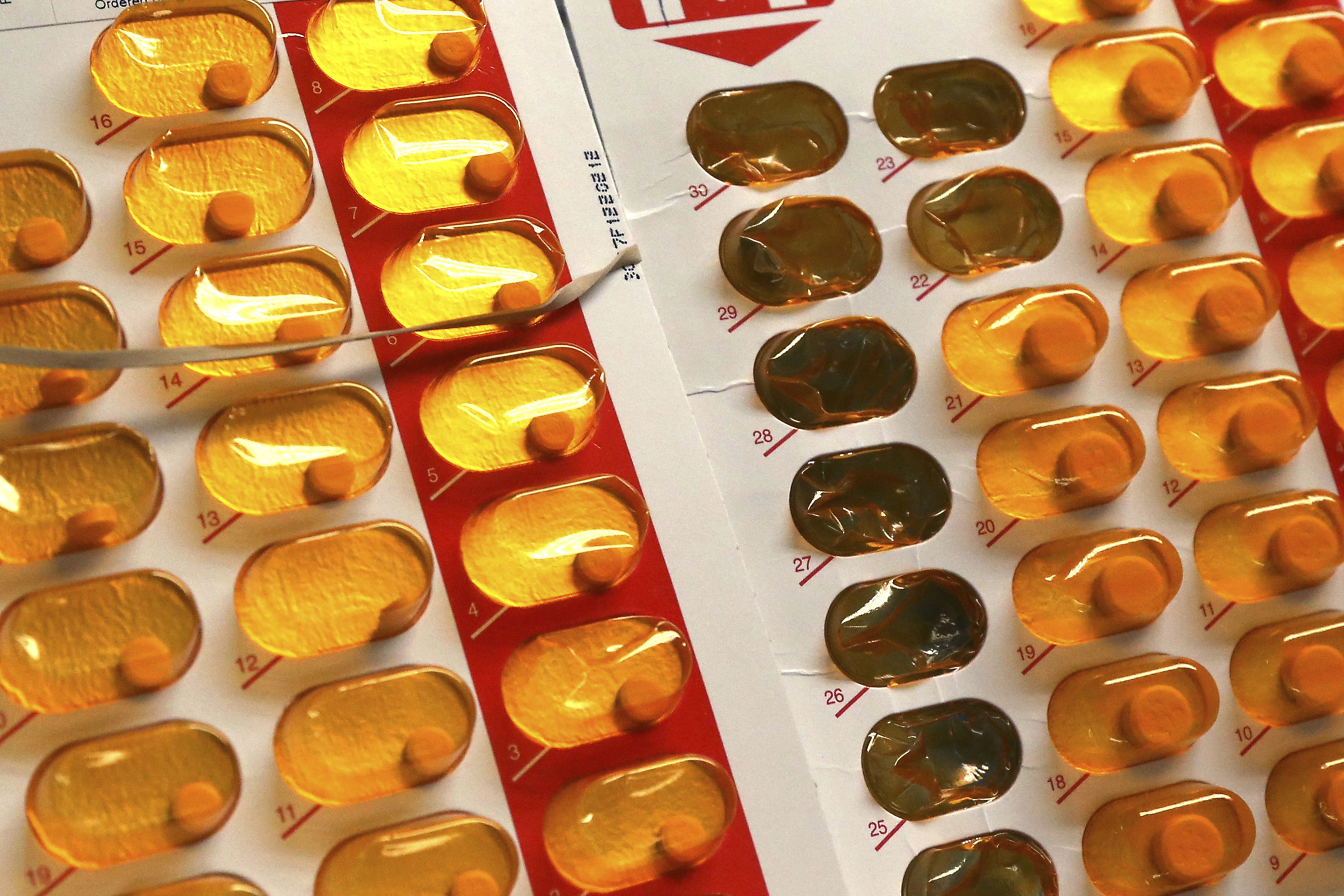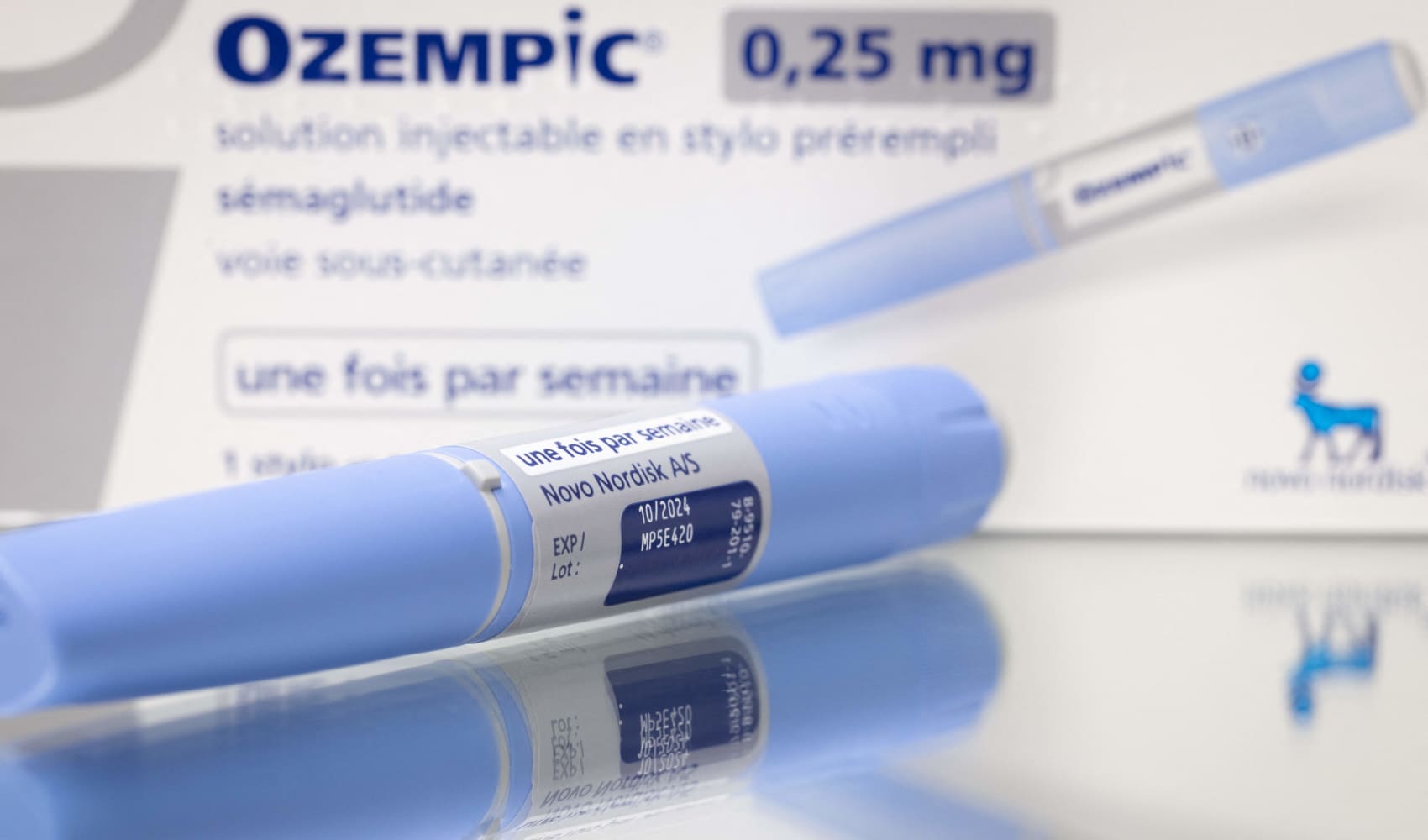
As a distiller, Dave Conway, then 30, often worked in a hot environment, which included climbing ladders and rolling barrels. He wasn’t so surprised when he felt lightheaded and tired. After Googling his symptoms, he thought he had heat exhaustion, but they didn’t improve and soon he struggled to breath. Again, he turned to the Internet and thought perhaps pneumonia was to blame.
“I started to experience shortness of breath,” the 34-year-old from Columbus, Ohio tells TODAY.com. “I was more nauseous easily. I was coughing more.” He went to urgent care at his boss’ encouragement about three weeks after he first experienced the lightheadedness. Urgent care sent him to the emergency room where he learned what was wrong.
“I actually had 100% blockage in my left anterior descending artery, which is known as a 'widow maker' heart attack,” he says. “I like to joke that I wasn’t married at the time, so it didn’t really take.”
Lightheadedness, shortness of breath and coughing
Get Tri-state area news and weather forecasts to your inbox. Sign up for NBC New York newsletters.
On September 6, 2018, when Conway first experienced lightheadedness, he thought it was from a hot day at work and relaxed with a beer before heading home to shower.
“I was more tired than normal, feeling dizzy, lightheaded. I was sweating but feeling cold,” he explained. “I went onto WebMD and typed my symptoms and it’s like ‘heat exhaustion,’ and I was like, ‘Oh, that makes sense.’”
But as the weeks passed, the symptoms didn’t improve and he started having problems breathing and was coughing a lot. This time, he thought he had pneumonia based on his research.
Health
“That accounts for shortness of breath, not feeling great and not getting better,” Conway says.
On September 23, 2018, he went to urgent care and felt shocked by what they told him.
“They’re like, ‘You definitely don’t have pneumonia. But your blood pressure is 186 over 120 and your resting heart rate is 120. So, you need to go to the ER,’” he says.
When Conway arrived at the emergency room, they took him back immediately. While pleased he didn’t have to wait, he realized something must be seriously wrong.
“I recognized that's usually not a good sign if you get to skip the line,” Conway says.
Doctors ran tests, including an echocardiogram, which tells doctors how well the heart is working. Conway had an ejection fraction of 10%, while a normal ejection fraction is about 50 to 70%, according to the American Heart Association. This means he was in heart failure.
“I was not feeling great. Part of the reason was I was 30 and when I felt bad I was just like, ‘Welcome to getting older,’” he says. “I was going into kidney failure, liver failure, like pretty much any type of organ failure that was going on was really starting to happen because hardly any blood was able to go around and circulate.”
At first, they thought Conway had myocarditis, a bacterial infection of his heart. Then he had a stroke and further testing revealed he experienced a widow maker heart attack the first week of September and had been walking around without treatment ever since.
“I had two more strokes over the next 48 hours,” he says. “What had happened was the clots that had formed in my heart, because it wasn’t beating efficiently, started to pool and then once I got on blood thinners and a lot of the liquid starting coming off some of those (clots) broke off and then went into the brain.”
The next 12 days, Conway was in the intensive care unit. While he knew he was seriously ill, he still felt surprised to learn they considered putting him on the heart transplant list. He slowly started improving.
“So the widow maker I think it has like a 94% fatality rate if you don’t get to the hospital within the first 90 minutes,” Conway says. "I was walking around and still working."
Heart disease in younger patients
When people think of heart disease, they often think it is something that occurs after a lifetime of unhealthy habits, such as being too sedentary, smoking or having uncontrolled high blood pressure or high cholesterol. Experts say it can occur at any age.
“Only about 53% of those adults less than age 45 thought they were at risk for heart disease,” Dr. Laxmi Mehta, director of preventative cardiology and women’s cardiovascular health at the Ohio State University Wexner Medical Center, tells TODAY.com. “It’s the number one killer of men and women. We’re all at risk. So we should be concerned about it in the prevention, which starts early.”
People under 45 develop heart disease for much the same reasons older adults do, she says. Mehta says risk factors include:
- Family history of heart disease.
- High cholesterol.
- High blood pressure.
- Inactivity.
- Cocaine use.
Younger people might not visit a primary care doctor or a specialist as often as older people, meaning some risk factors could be overlooked.
“When we’re young, our health isn’t necessarily always at the top of mind,” Mehta says. “Unfortunately health sometimes falls through the cracks.”
While people can manage lifestyle factors, such as eating a healthy diet, moving their bodies more and quitting smoking, being aware of how their health is changing remains important.
“Managing your weight and having good cholesterol control, managing blood pressure and managing sugar … involves having a health care provider,” she says.
If people think they or someone they love is experiencing a heart attack, they need to call 911 immediately.
“Call an ambulance. Time is muscle and so the more time is delayed in opening of the blockage, the more risk of damage to the heart,” she says.
From walking 30 seconds to running a 5K
When Conway left the ICU, he could barely walk for 30 seconds before he needed to take a break. He spent three months in cardiac rehab to improve his strength and abilities. He switched to a low sodium diet and knew that exercise would need to be a big part of his life.
“I was walking up a flight of stairs after that first month,” he says. “When they did the next echocardiogram, I got up to 25% (ejection fraction), which isn’t great. But it’s still a lot of improvement.”
He kept working on his endurance. Soon he could run for 10 to 15 minutes before taking a break. About a year after his heart attack, he ran a 5K.
“That was something that I couldn’t do before the heart attack,” he says. “On the next echocardiogram they did it was 35 to 40% (ejection fraction).”
Being at 40% or above meant he was not in heart failure. He just squeaked by but he’s happy to take it.
“I like to say I’m in heart summer school now,” he says. "I’m not failing, but there’s still improvements to be had."
He shares his story so younger adults realize they, too, can be at risk for heart disease. Also, he wants them to skip doing their own research when it comes to figuring out their health.
“I was very against going to the doctor for the only reason that I didn’t think I needed to go to the doctor,” he says. “Had I gone to the doctor immediately after everything happened I would have had a better chance with my recovery.”
This story first appeared on TODAY.com. More from TODAY:



